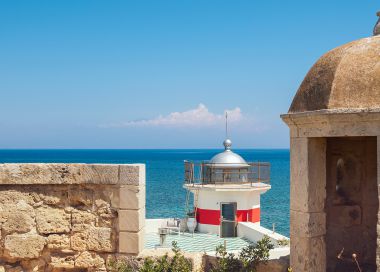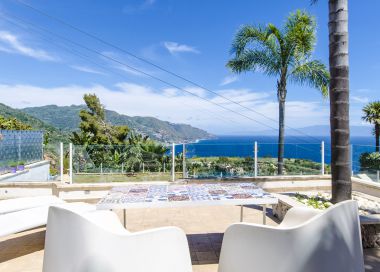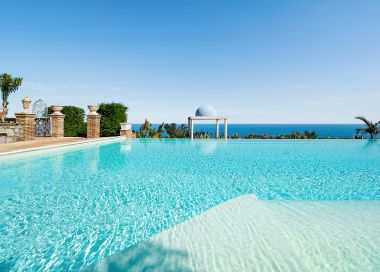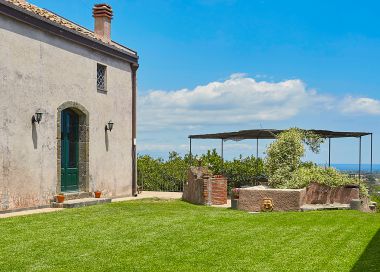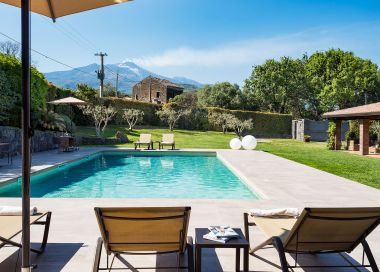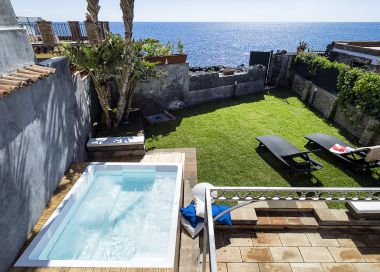Tindari archaeological Area and antique Theater
Tindari, the archaeological area with the Greek Theatre, as well as the Black Madonna’s Sanctuary and the Marinello Lakes
The town of Tindari was founded on 396 BC by Dionysius of Syracuse. Its name, Tyndaris, was attributed to the town in honour of Tyndareus, king of Sparta. Destroyed by a landslide and two earthquakes, Tindari saw the light again thanks to some archaeological excavations started in 1838 and resumed later on between 1960 and 1998. During these excavations Roman mosaics, sculptures and ceramics were found, which are now displayed in the local museum. At present,, dating back to Greek-Roman times, the remains of the ancient town walls are visible, as well as the Sanctuary of the Black Madonna.
The ancient town walls, remodelled in the late imperial and Byzantine era, originally extended for about 3 kilometres on two parallel rows separated by a space from which rose square towers that led to the top of the walls (a section of these stairs is still visible). The main gate, on the southwestern side, was flanked by two towers and protected by a semicircular pincer-shaped frontispiece, with the internal area paved with cobblestones. Other small passages opened alongside the towers of the main gate and were used for the sorties of the defenders.
The Greek theatre, which was restored later in Roman times, is situated on a promontory from which there are magnificent views over the Tyrrhenian Sea, the Aeolian islands and the small lakes of Marinello. After years of neglect, today the theatre is the seat of musical shows and theatrical events during summertime.
The small lakes of Marinello, or "dried sea," are a spectacular and curious sand formation that contains at its centre small stretches of water. According to one amongst various legends, a beach would miraculously form following the fall of a little girl from the Sanctuary's terrace, who was later found safe and sound on the beach which had just been created. Following the miracle, the child's mother, a pilgrim coming from a far-away land, would have changed her mind about the true nature of the scuplture, about which she had doubts because of the Virgin's black colour. Another legend tells of the death of Pope Eusebio on this very beach, on 17th August 310, a few months after his election, on 18th April. The Pope had supposedly been exiled to Sicily from Massenzio. Furthermore, next to the beach a small cave opens up. According to a local legend, this cave was inhabited by a witch who attracted sailors with her singing to then devour them. When some of her baits renounced to continue because of the difficulty of reaching the cave entrance the witch unburdened her feelings by plunging her fingers into the cave walls: the numerous holes in the rock would originate from this.
The Sanctuary of the Black Madonna is situated at the very edge of the promontory. There lies a statue carved in cedar wood, that probably reached this coast due to Iconoclasm (a political-religious movement that developped during the Byzantine Empire arounf the first half of the VIII century). The church was destroyed by Algerian pirates in 1544 and was rebuilt a few decades later to be permanently enlarged in 1979. The Sanctuary festival occurs every year on 7th September.
How to reach Tindari:
Tindari rises over a promontory on the north-east coast of Sicily which dominates over the Tyrrhenian Sea in front of the Aeolian islands, between Capo Calavà and Milazzo, about 60 km to the west of Messina. From the A20 motorway (Palermo-Messina) exit at Falcone and then proceed on the SS 143 towards Palermo for about 7 km. Then follow the directions to Tindari.
The ancient town walls, remodelled in the late imperial and Byzantine era, originally extended for about 3 kilometres on two parallel rows separated by a space from which rose square towers that led to the top of the walls (a section of these stairs is still visible). The main gate, on the southwestern side, was flanked by two towers and protected by a semicircular pincer-shaped frontispiece, with the internal area paved with cobblestones. Other small passages opened alongside the towers of the main gate and were used for the sorties of the defenders.
The Greek theatre, which was restored later in Roman times, is situated on a promontory from which there are magnificent views over the Tyrrhenian Sea, the Aeolian islands and the small lakes of Marinello. After years of neglect, today the theatre is the seat of musical shows and theatrical events during summertime.
The small lakes of Marinello, or "dried sea," are a spectacular and curious sand formation that contains at its centre small stretches of water. According to one amongst various legends, a beach would miraculously form following the fall of a little girl from the Sanctuary's terrace, who was later found safe and sound on the beach which had just been created. Following the miracle, the child's mother, a pilgrim coming from a far-away land, would have changed her mind about the true nature of the scuplture, about which she had doubts because of the Virgin's black colour. Another legend tells of the death of Pope Eusebio on this very beach, on 17th August 310, a few months after his election, on 18th April. The Pope had supposedly been exiled to Sicily from Massenzio. Furthermore, next to the beach a small cave opens up. According to a local legend, this cave was inhabited by a witch who attracted sailors with her singing to then devour them. When some of her baits renounced to continue because of the difficulty of reaching the cave entrance the witch unburdened her feelings by plunging her fingers into the cave walls: the numerous holes in the rock would originate from this.
The Sanctuary of the Black Madonna is situated at the very edge of the promontory. There lies a statue carved in cedar wood, that probably reached this coast due to Iconoclasm (a political-religious movement that developped during the Byzantine Empire arounf the first half of the VIII century). The church was destroyed by Algerian pirates in 1544 and was rebuilt a few decades later to be permanently enlarged in 1979. The Sanctuary festival occurs every year on 7th September.
How to reach Tindari:
Tindari rises over a promontory on the north-east coast of Sicily which dominates over the Tyrrhenian Sea in front of the Aeolian islands, between Capo Calavà and Milazzo, about 60 km to the west of Messina. From the A20 motorway (Palermo-Messina) exit at Falcone and then proceed on the SS 143 towards Palermo for about 7 km. Then follow the directions to Tindari.






